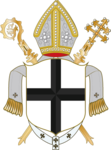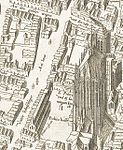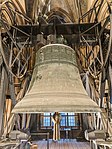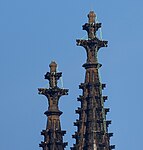Eurovision Young Musicians 2016

The Eurovision Young Musicians 2016 was the eighteenth edition of the Eurovision Young Musicians contest, which took place on 3 September 2016, outside the Cologne Cathedral, in Cologne, Germany. For a second consecutive time, German public broadcaster Westdeutscher Rundfunk (WDR) was the host broadcaster for the event, with Daniel Hope and Tamina Kallert being the presenters for the show. Musicians representing eleven countries with European Broadcasting Union (EBU) membership, participated in the contest, with San Marino making their debut, while Greece, Moldova, Netherlands, and Portugal decided not to participate in this edition. The candidates were accompanied by the WDR Symphony Orchestra Cologne, conducted by Clemens Schuldt. A five-person jury decided which of the participants would be awarded with the top-three prizes. Łukasz Dyczko of Poland won the contest, with Czech Republic and Austria placing second and third respectively.
Excerpt from the Wikipedia article Eurovision Young Musicians 2016 (License: CC BY-SA 3.0, Authors, Images).Eurovision Young Musicians 2016
Domkloster, Cologne Altstadt-Nord (Innenstadt)
Geographical coordinates (GPS) Address Phone number Website Nearby Places Show on map
Geographical coordinates (GPS)
| Latitude | Longitude |
|---|---|
| N 50.9413 ° | E 6.9583 ° |
Address
Kölner Dom (Hohe Domkirche St. Peter und Maria)
Domkloster 4
50667 Cologne, Altstadt-Nord (Innenstadt)
North Rhine-Westphalia, Germany
Open on Google Maps











